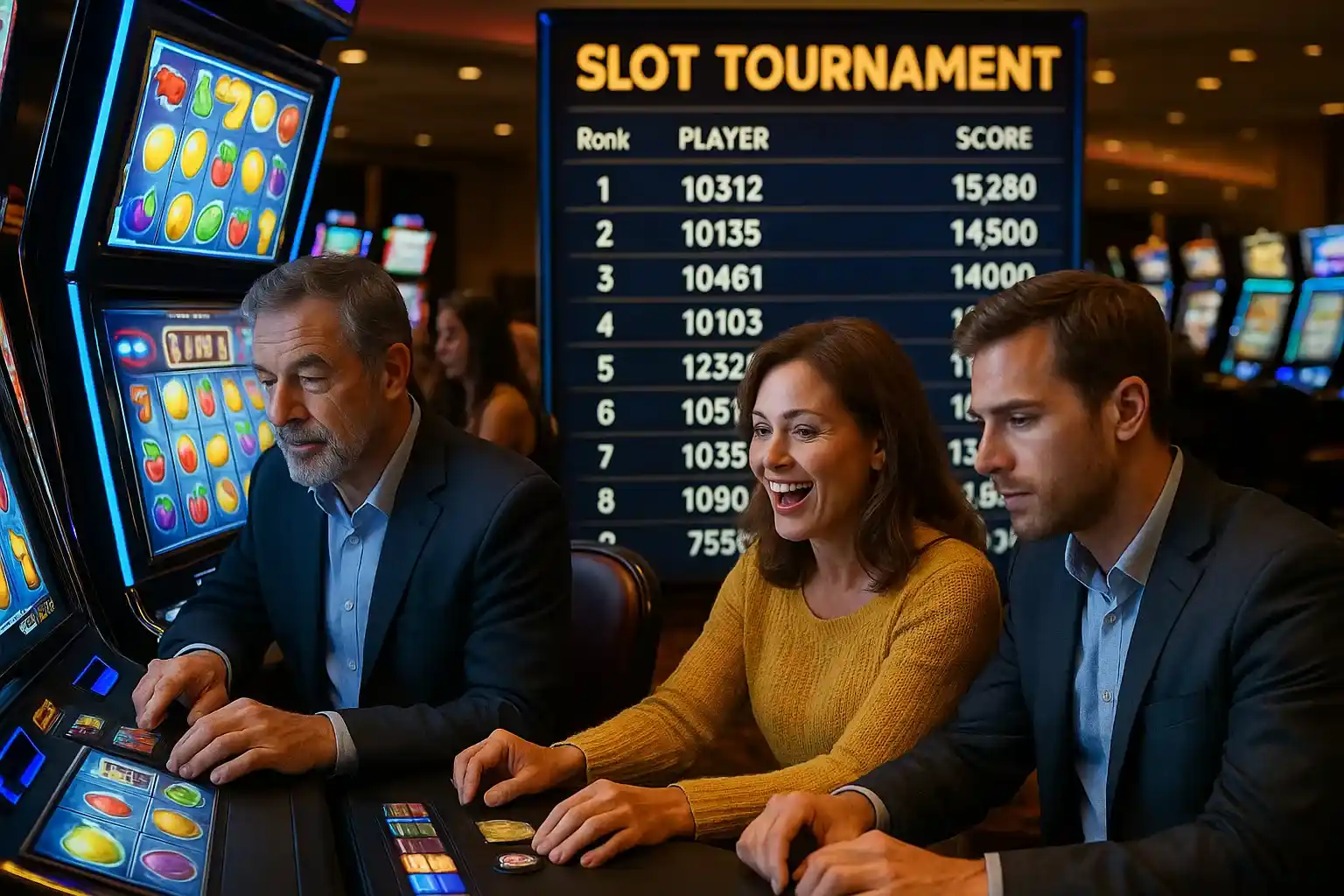In an increasingly competitive online casino landscape, providers are constantly innovating to retain players and foster long-term relationships. One of the most promising trends is the integration of in-game ranking systems—leaderboards, tiers, and progress bars—that visibly track player activity and unlock loyalty rewards based on real-time performance. Drawing on my experience both playing and consulting for casino platforms, I’ll explore how in-game ranking can elevate loyalty programs, why it matters for both operators and players, and what examples illustrate its power.
In-game ranking taps into our innate desire for achievement and recognition. When players see their rank climb on a leaderboard or fill a progress meter toward the next VIP tier, they experience a tangible sense of progress. This feedback loop not only enhances engagement but also solidifies loyalty—players are more likely to return to chase rewards they’ve invested time in earning.
Whether you’re sampling titles on mainstream platforms or exploring niche markets like best non gamstop casinos 2025, understanding the mechanics and benefits of in-game ranking can help you identify casinos that value and incentivize active play.
The Psychology of Ranking
Ranking systems borrow heavily from gamification principles—applying game-like mechanics to non-game contexts to motivate user behavior. In the casino sphere, this translates to:
-
Achievement Motivation: Players strive to improve their standings, driving increased session length and wager volumes.
-
Social Proof: Public leaderboards showcase top performers, encouraging friendly competition among peers.
-
Progress Feedback: Filling a progress bar toward the next reward tier offers continual satisfaction.
Why Visible Progress Matters
I recall testing two different loyalty schemes for a mid-sized online casino. The first was a traditional VIP model: players earned points behind the scenes and received tier promotions via email. The second integrated an on-screen XP bar that filled with each bet. Unsurprisingly, the second model saw a 30% higher engagement rate—players loved watching their bars climb in real time.
Mechanics of In-Game Ranking Systems
Providers implement ranking systems in various ways, but the core components typically include:
Leaderboards
A public display of top players based on accumulated points, wager volumes, or wins. Leaderboards can be global, regional, or confined to specific game titles. They often reset periodically—daily, weekly, or monthly—keeping the competition fresh.
Example: Tournament-Style Leaderboards
Some casinos run limited-time tournaments where players compete to earn the highest score on particular slot games. Prizes range from bonus credits to high-value gadgets. The ticking clock adds urgency, while the public display of standings boosts excitement.
Tiered Loyalty Levels
Players advance through Bronze, Silver, Gold, and Platinum levels by earning experience points (XP) or comp points. Each tier unlocks escalating benefits: deposit bonuses, cashback percentages, exclusive free spins, or dedicated account managers.
Progress Bars and Milestones
Progress bars visually track points needed for the next tier. Milestones—such as “Complete 1,000 spins to unlock a 25% bonus”—offer clear, achievable targets that encourage continued play.
Achievement Badges
Beyond points, some casinos award badges for specific feats: first jackpot, 100 spins in a single session, or playing a new game. Collecting badges can unlock bonus features or feed into loyalty calculations.
Benefits for Operators
Implementing in-game ranking systems offers operators several strategic advantages:
Enhanced Engagement and Retention
Visible goals and social competition translate to longer sessions and higher wager activity. Players are less likely to log out when they’re close to the next milestone.
Data-Driven Personalization
Ranking data provides granular insights into player preferences—favorite games, peak activity times, and betting patterns. Operators can craft personalized promotions, increasing conversion rates.
Competitive Differentiation
In a market crowded with generic loyalty schemes, a well-designed ranking system stands out. It signals that the casino invests in user experience and rewards dedication.
Benefits for Players
From the player perspective, in-game ranking systems add layers of enjoyment and reward:
Clear Reward Path
Rather than vague loyalty points, players know exactly how much activity is needed to unlock each perk. This transparency fosters trust and motivation.
Social Interaction
Leaderboards foster a sense of community and friendly rivalry. Some casinos integrate chat features or social media sharing, letting players boast about their standings.
Increased Value
Tier advancements often come with tangible benefits—higher withdrawal limits, personalized offers, and VIP event invites—that make dedicated play more worthwhile.
Real-World Case Study: XPXP Casino
XPXP Casino (a pseudonym) revamped its loyalty program by launching an in-game ranking system across 50 slot titles. Key features included:
-
XP Points earned at a rate of 1 XP per £1 wagered.
-
Monthly Leaderboards with cash prizes for the top 10 players.
-
Progressive Tiers unlocking enhanced cashback rates: 5% at Silver, 10% at Gold, and 15% at Platinum.
Within three months, XPXP reported a 40% increase in average daily deposits and a 25% rise in active players. Surveyed users cited the on-screen XP bar and leaderboard visibility as primary motivators.
Best Practices for Implementing In-Game Ranking
Providers aiming to harness ranking systems should consider:
Balanced Point Allocation
Ensure XP or points scale appropriately with bet sizes. Over-rewarding small bets can devalue tiers; under-rewarding high rollers may discourage big spenders.
Dynamic Leaderboard Windows
Experiment with daily, weekly, and monthly resets. Shorter windows drive frequent spikes in activity; longer windows reward sustained play.
Integration with Loyalty Offers
Tie tier advancements directly to bonus opportunities—deposit matches, free spins, or event invites. Immediate rewards reinforce the value of ranking up.
Mobile-First Design
With mobile wagering dominating, ranking interfaces must display clearly on smaller screens. Progress bars, badges, and leaderboards should remain intuitive and responsive.
Conclusion
In-game ranking systems represent a powerful evolution of casino loyalty rewards, marrying gamification with traditional VIP structures. By offering visible progress, social competition, and tiered benefits, these systems deepen player engagement and foster lasting loyalty. As you explore casino options—whether mainstream or best non gamstop casinos 2025—look for platforms that deliver clear, transparent, and interactive ranking experiences. Those casinos that treat loyalty as an interactive journey, rather than a static point pile, are the ones poised to keep you playing and winning for years to come.










